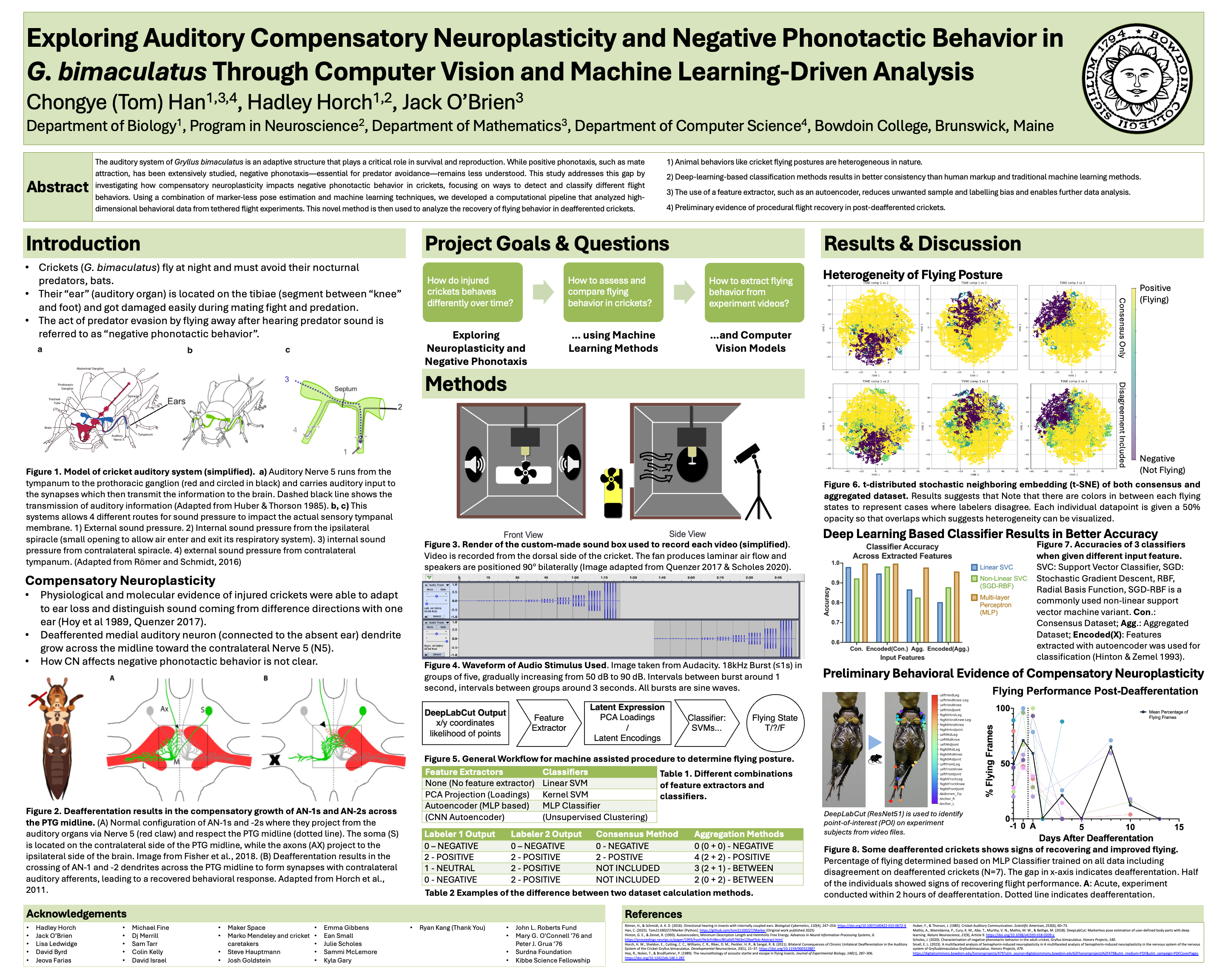Exploring Auditory Compensatory Neuroplasticity and Negative Phonotactic Behavior in G. bimaculatus Through Computer Vision and Machine Learning-Driven Analysis

Introduction
Cricket have their ears located on their tibiae, which is similar to our human ears being located on our elbow. During their lifetime, they lose their ears from mating fights and predation. Previous work in the lab has shown that crickets can adapt to this loss of hearing by regrowing their auditory neurons and connect to the contralateral ear. This process is called compensatory neuroplasticity.
This project uses computer vision and machine learning to analyze the behavior of crickets in response to auditory stimuli, specifically focusing on negative phonotactic behavior, which is the avoidance of sound coming from predators. The goal is to understand the impact compensatory neuroplasticity has on their actual behavior and how it affects their ability to respond to threats.
Full text is available on Bowdoin’s Digital Commons.